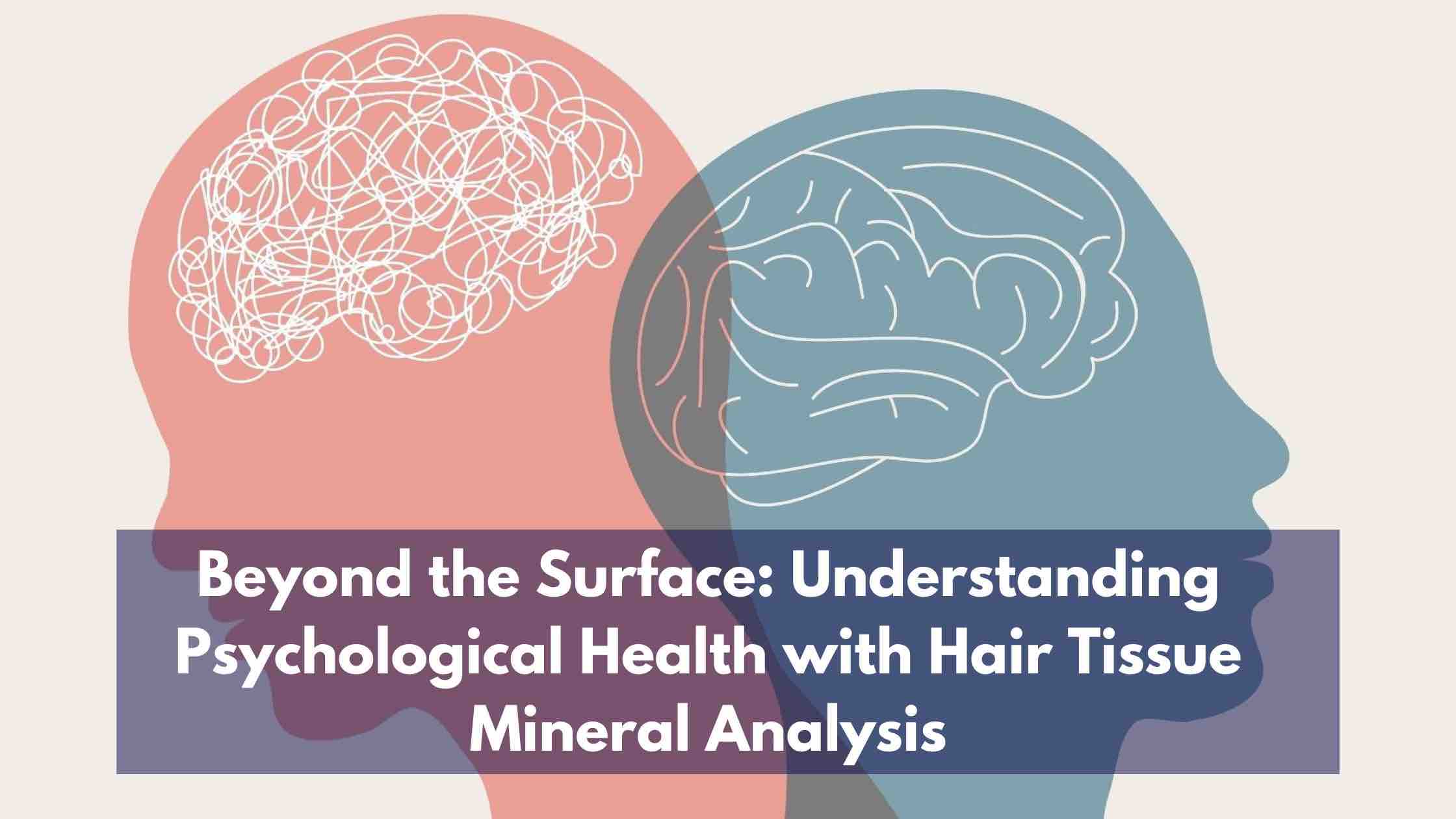Your physical health and mental well-being are closely interconnected. Many factors, including diet, lifestyle, and environmental exposure, can impact your mental health. One lesser-known but vital aspect is the role of hair tissue mineral analysis (HTMA) in assessing your overall health, including psychological issues. In this article, we will explore the link between HTMA and psychological issues, shedding light on how this analysis can provide valuable insights into your mental health.
What is Hair Tissue Mineral Analysis (HTMA)?
HTMA is a non-invasive diagnostic test that measures the mineral content in your hair. Hair is an ideal tissue for analysis as it contains a record of mineral and trace element levels over time. HTMA involves collecting a small sample of hair and analyzing it in a laboratory to determine the mineral levels present, including essential minerals like magnesium, calcium, zinc, and copper, as well as toxic metals such as lead, mercury, and arsenic.
HTMA has been used for decades to assess nutritional imbalances and toxic metal exposure, as it provides a comprehensive view of an individual’s mineral status and overall health. However, recent research has also shed light on the connection between HTMA and psychological issues.
The Link between HTMA and Psychological Issues
Research has shown that mineral imbalances and toxic metal accumulation in the body can have a significant impact on mental health and contribute to psychological issues such as anxiety, depression, and mood disorders. Minerals play a crucial role in various physiological processes in the body, including the production of neurotransmitters, which are chemicals that transmit signals in the brain. Neurotransmitters, such as serotonin, dopamine, and gamma-aminobutyric acid (GABA), are responsible for regulating mood, sleep, appetite, and other cognitive functions.
Imbalances in minerals like magnesium, calcium, and zinc can affect the production and function of neurotransmitters, leading to mood disorders. For example, magnesium deficiency has been linked to symptoms of anxiety and depression, as it plays a key role in the production of serotonin, which is known as the “feel-good” neurotransmitter. Similarly, imbalances in copper and zinc levels can disrupt the delicate balance of neurotransmitters in the brain, leading to mood swings and other psychological issues.
Toxic metal accumulation in the body can also impact mental health. Exposure to toxic metals like lead, mercury, and arsenic can disrupt normal brain function and contribute to symptoms of anxiety, depression, and other mental health disorders. These metals can accumulate in the body over time due to various sources such as contaminated water, food, and air, as well as exposure to household products and environmental pollution.
HTMA can provide valuable insights into an individual’s mineral status and toxic metal burden, helping to identify imbalances that may be contributing to psychological issues. By analyzing the mineral and toxic metal levels in the hair, HTMA can help identify deficiencies or excesses, and provide recommendations for targeted mineral supplementation or detoxification protocols to restore balance and support mental health.
How HTMA Can Be Used in Psychological Health Management
HTMA can be a valuable tool in managing psychological health issues. Here are some ways HTMA can be utilized:
1. Identifying Mineral Imbalances: HTMA can provide insights into an individual’s mineral status and identify any deficiencies or excesses. By addressing these imbalances through targeted mineral supplementation, it is possible to support the production and function of neurotransmitters, which can have a positive impact on mood and overall mental health.
2. Detecting Toxic Metal Burden: HTMA can also detect the accumulation of toxic metals in the body. If toxic metal exposure is identified, appropriate detoxification protocols can be implemented to reduce the burden and minimize the impact on mental health.
3. Personalized Nutritional Support: HTMA can provide valuable information about an individual’s nutritional status, including any deficiencies or excesses in minerals. This information can be used to develop personalized nutritional plans to optimize nutrient intake and support mental health. For example, if a person has a magnesium deficiency, a targeted supplementation plan can be developed to address this deficiency and potentially improve symptoms of anxiety or depression.
4. Monitoring Progress: HTMA can be used as a tool to monitor progress in psychological health management. Regular HTMA tests can track changes in mineral levels and toxic metal burden over time, allowing for adjustments in supplementation or detoxification protocols as needed to optimize results.
5. Prevention and Early Intervention: HTMA can also be used as a preventive measure to identify mineral imbalances or toxic metal accumulation before they manifest as psychological issues. Early intervention can help address imbalances or toxic burden before they worsen and contribute to more severe psychological health issues.
Conclusion
HTMA is a valuable diagnostic tool that can provide insights into an individual’s mineral status and toxic metal burden, which can play a significant role in psychological health. By identifying and addressing mineral imbalances and toxic metal accumulation, HTMA can be used as a part of an integrative approach to psychological health management. If you are struggling with psychological issues, consider exploring the potential benefits of HTMA as part of your comprehensive mental health care plan.

